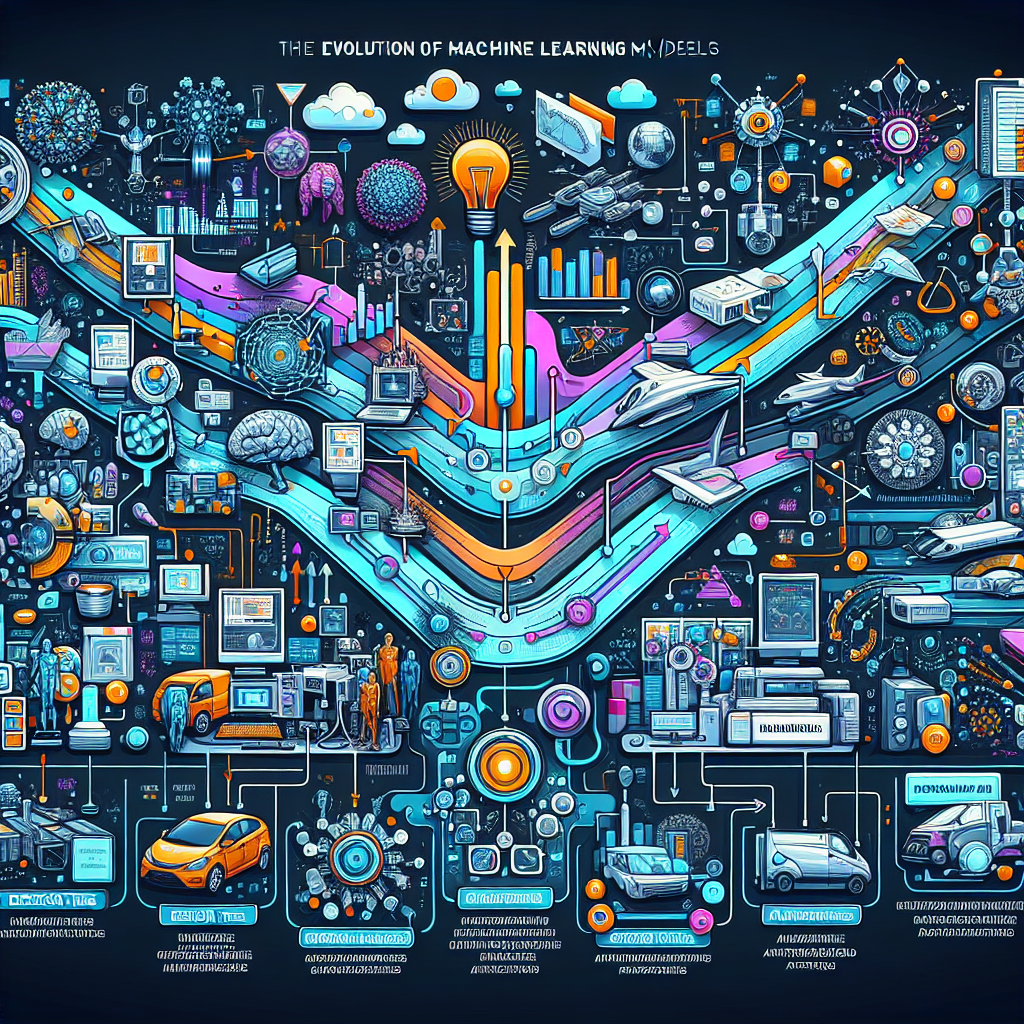The Evolution of Machine Learning Models and Their Application in Real-World Scenarios
Machine learning has rapidly evolved over the past few decades, revolutionizing the way we approach data analysis, pattern recognition, and decision-making. With the rise of big data and advances in computing power, machine learning models have become increasingly sophisticated, enabling them to tackle complex real-world problems in a variety of domains.
The Evolution of Machine Learning Models
Machine learning has its roots in the early days of computer science, with early developments in artificial intelligence and pattern recognition. However, it wasn’t until the 1990s that machine learning really began to take off, fueled by breakthroughs in neural networks and statistical learning algorithms. This paved the way for the development of more powerful machine learning models that could handle larger and more complex datasets.
One of the key milestones in the evolution of machine learning was the introduction of deep learning, a subfield of machine learning that focuses on learning representations of data through multiple layers of abstraction. This approach has proven to be highly effective in tasks such as image and speech recognition, natural language processing, and even playing complex strategic games like Go.
Another important development in machine learning has been the rise of reinforcement learning, a type of machine learning where an agent learns to make decisions by interacting with its environment and receiving feedback. This approach has been particularly successful in areas such as robotics, autonomous vehicles, and game playing.
Application of Machine Learning Models in Real-World Scenarios
Machine learning models are being applied in a wide range of real-world scenarios, driving innovation and creating new opportunities across various industries. Some notable applications include:
- Healthcare: Machine learning models are being used to analyze medical images, diagnose diseases, and predict patient outcomes. This has the potential to improve the accuracy and efficiency of healthcare delivery, leading to better patient care.
- Finance: In the finance industry, machine learning models are being employed for fraud detection, risk assessment, and algorithmic trading. These models can analyze vast amounts of financial data to identify patterns and anomalies, helping to improve security and decision-making.
- Marketing: Machine learning is revolutionizing the way marketing campaigns are targeted and personalized. By analyzing customer data and behavior, machine learning models can optimize marketing strategies and deliver highly relevant and effective messaging to consumers.
- Transportation: Self-driving cars, traffic prediction, and route optimization are just a few examples of how machine learning is transforming the transportation industry. These models have the potential to improve safety, reduce congestion, and enhance the efficiency of transportation systems.
- Manufacturing: Machine learning models are being used to optimize production processes, predict equipment failures, and improve quality control in manufacturing operations. This can lead to cost savings, increased productivity, and enhanced product quality.
These examples only scratch the surface of the many ways in which machine learning is being applied in real-world scenarios. As the technology continues to advance, we can expect to see even more groundbreaking applications across a wide range of fields.
Conclusion
Machine learning has come a long way since its early days, and its evolution shows no signs of slowing down. With the increasing availability of data and computing power, machine learning models are becoming more powerful and versatile, enabling them to address a wide variety of complex problems in the real world.
As we continue to push the boundaries of what is possible with machine learning, we can expect to see even more profound impacts on industries, economies, and society as a whole. By embracing and harnessing the potential of machine learning, we have the opportunity to drive innovation, create new opportunities, and solve some of the most pressing challenges of our time.
FAQs
Q: What are some common challenges in applying machine learning models to real-world scenarios?
A: Some common challenges include data quality and availability, model interpretability, scalability, and ethical considerations. It’s important to carefully consider these factors when implementing machine learning solutions in real-world settings.
Q: How can companies leverage machine learning models to gain a competitive advantage?
A: By leveraging machine learning models, companies can gain insights from their data, automate decision-making processes, and improve the accuracy and efficiency of their operations. This can lead to cost savings, enhanced productivity, and a better understanding of customer behavior.
Q: What are some potential ethical implications of using machine learning models in real-world applications?
A: Ethical implications of machine learning include issues related to privacy, bias, discrimination, and accountability. It’s important for organizations to carefully consider these implications and take steps to mitigate any potential negative consequences of their machine learning initiatives.
